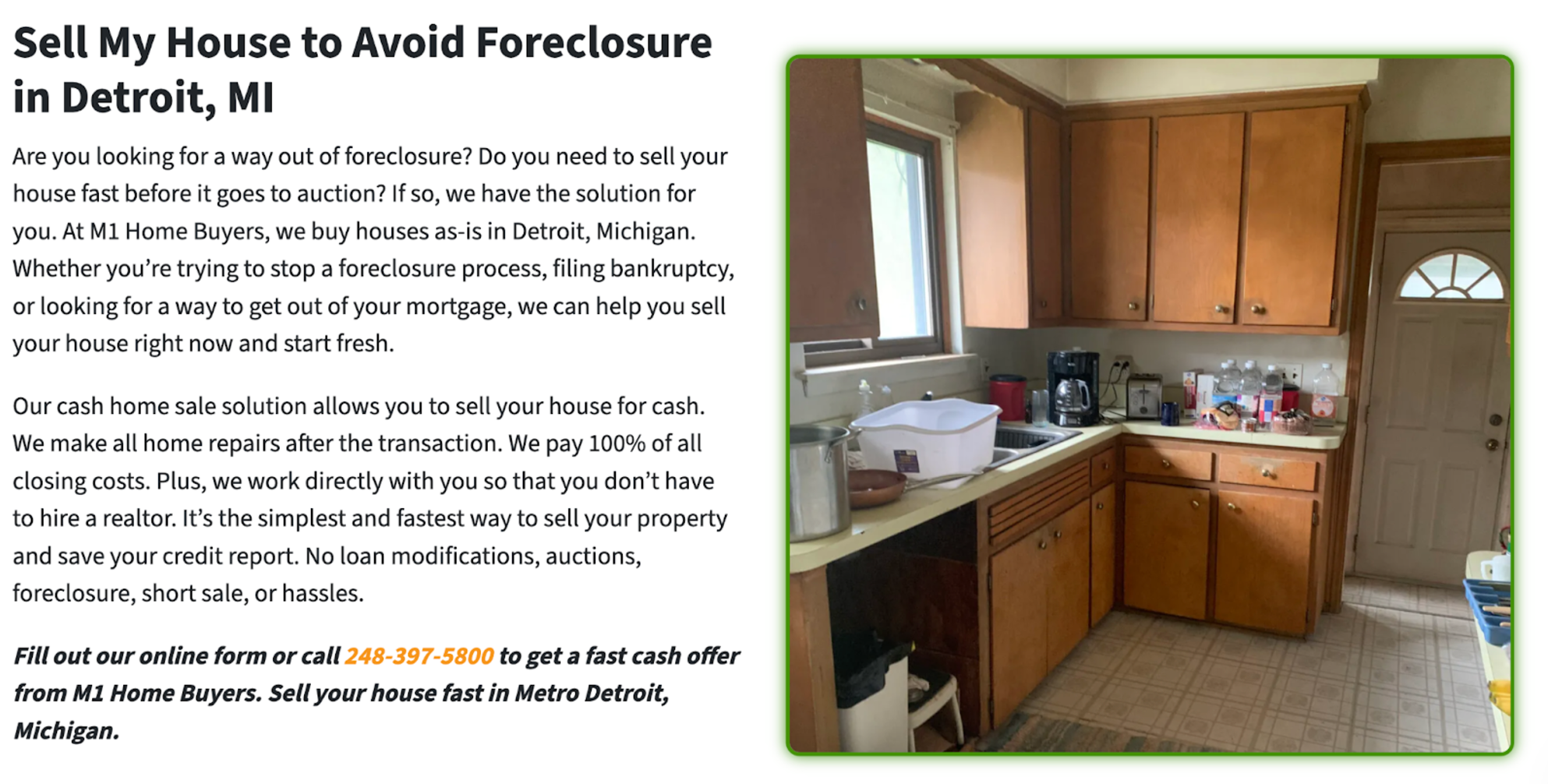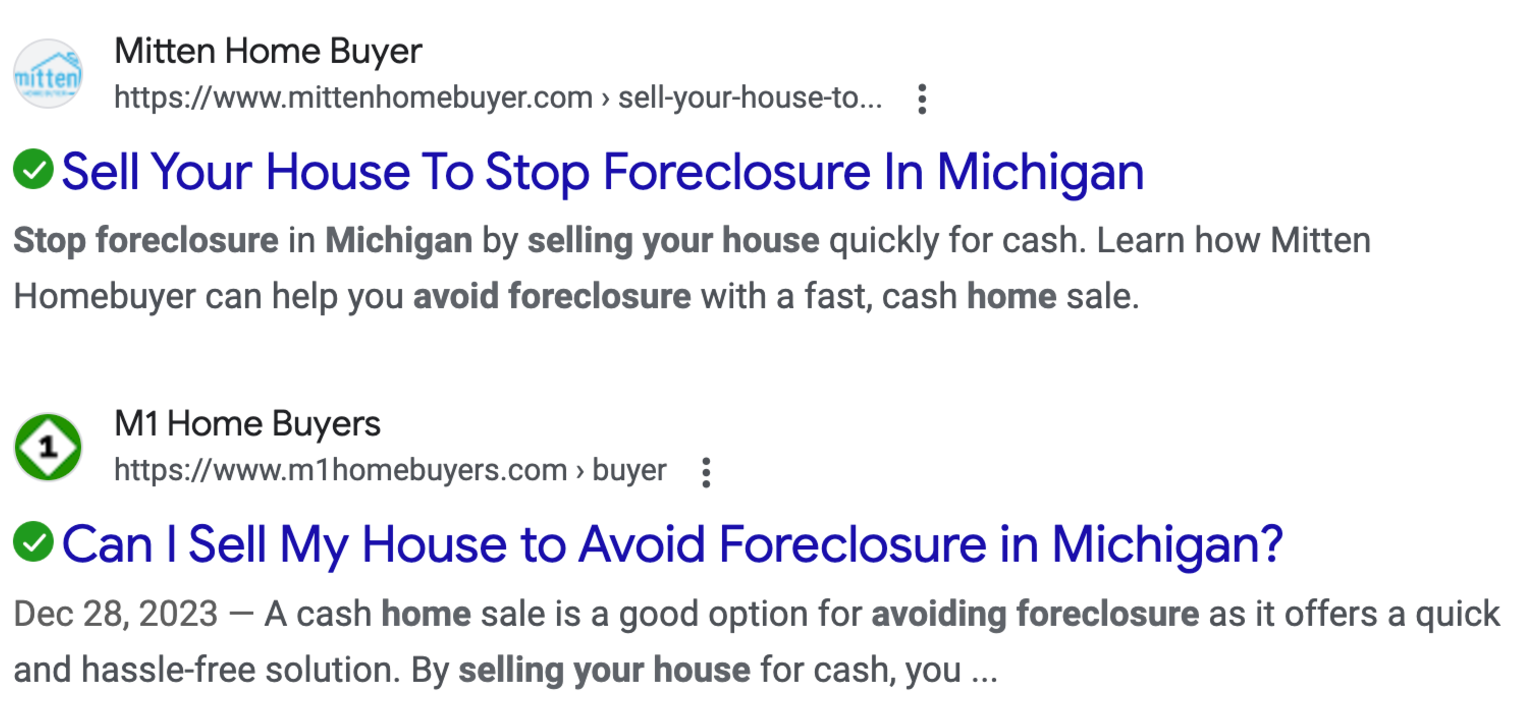
Pillar Power: A Great Way to Establish Website Authority
Like sands of the hourglass, web pages and blogs often slip through the Internet and go unnoticed. While there are several possible reasons for this, one big contributor is that an entourage of other pages did not link to the page. Instead, it’s created, put on the site, and just sits alone. It’s not given any reference or importance beyond itself.
As a result, the page never gains traction. There’s no traffic, no healthy CTRs, and no Google rankings. Even worse, the page hurts your website’s performance.
Sad Story: A Real Estate Website Run Amok
I discovered this with a real estate investment company I worked with a while back. These guys were successful house-flippers and real estate investors in Detroit, Michigan. They weathered the great Detroit economic crisis of 2013 and stuck around during the mass Exodus. They were still going strong when other investors were folding.
Yet, for all their prowess as real estate investors, they had a weak online marketing strategy. Their paid ads weren’t paying off. Their social media pages were quiet.
And their website sat dormant for years!
We House-Flipped a Website!
I partnered with a digital marketing agency to take over and resurrect the website. My job was to develop an SEO content strategy to get this website in the top five—minimum—for popular keyword searches in the real estate investor industry.
Like rebuilding an ugly house, we started from the foundation and worked our way up. After a hefty keyword research and competitor analysis, I wrote the home page, about us, ‘How It Works’, problem pages, FAQs, blogs, and…you guessed it…pillar pages.
What Is a Pillar Page?
Pillar pages are pages that are used to establish authority on a website. What is website authority?
Website authority, or domain authority, is a metric that predicts how well a website will rank on search engines.
It's based on factors like the quality and quantity of links, content relevance, and overall site credibility, with higher scores indicating a greater ability to rank well in search results.
That’s what a pillar page does!
- Contains quality content
- Quality internal and external links
- Has content that people want to read (in this case, motivated home sellers)
- Establishes credibility and trust with readers
But there’s something else a pillar page does to improve a website’s performance.
A pillar page makes direct connections with other pages on the website to form a cohesive message and brand. By making these connections and creating a cohesive message, the pillar page contributes to the website’s authority.
When I learned this, it became a HUGE game-changer. I found myself wanting to create pillar pages everywhere!
My Pillar Power Page Strategy
Here’s my approach to creating pillar pages. I’m going to use the client’s website as an example.
1. Create an Umbrella Topic or Page That Readers Are Super Interested In
Create a page and write the content based on a keyword or trending topic that gets LOTS of traffic.
- Problem Page
- Main menu page
- Super popular blog topic
It needs to be a page you know will generate some of the highest traffic on your website. I created a pillar page for this client from a common problem page (real estate investor websites don’t have service or product pages. Instead, they solve home seller problems. So they have problem pages).
In this example, the client, M1 Home Buyers, regularly buys houses from home sellers struggling with foreclosure or bankruptcy. So, I created a pillar page specifically on this topic:

I recommend writing a long-form page, 1500 to 2500 words. A long-form pillar page provides many opportunities for adding SEO elements such as keywords, relevant content, and internal/external links. Regardless of how many words your page has, cover everything a person wanting to sell their house to avoid bankruptcy would want to know.
2. Perform Your On-Page SEO Strategy
A page like this can catapult your website into higher rankings. So, you need to throw everything you have at it. Perform a proper, thorough SEO analysis and keyword research. Make sure you add a competitor analysis to the strategy.
IMPORTANT: When doing keyword research, look for long-tail keyword questions related as closely to the topic as possible.
I used the Semrush and Keyword Everywhere tools to find relevant keywords for this page.
I established the primary keyword, “Sell My House to Avoid Foreclosure”. From this keyword, I can begin to develop my pillar page strategy. For instance, using the Semrush SEO Content Template tool, I collected a batch of semantically related keywords I can insert into the pillar page.

Whatever tool you use, choose the keywords with the highest volume and most closely connected to the page or topic.
3. Link All Relevant Pages to the Pillar Page and Reverse
Earlier, I stated that a key component of a pillar page is that it forms a tight bond with the other pages on the website in a cohesive way. In other words, the connection is streamlined and natural.
Every page is up for grabs:

The point is that there needs to be a superhighway of links coming in and going out of the page. You can also use external links and backlinks.
IMPORTANT: LInking to home pages and about us pages is a given. However, the goal here is to link to the MOST RELEVANT pages to the topic.
4. Create 5 Blog Topics Directly Related to the Pillar Page
Blogging is a great way to find inspiration if you're hurting for blog topics. We'll call this the 'blog harem'. Here's how you do it.
- As I mentioned, perform keyword research based on the primary phrase you're using for the pillar page.
- Use an SEO tool like Semrush, Ahrefs, Keywords Everywhere, or other tools.
- Look for longtail keyphrase questions in the results.
- Create topics based on those questions or other keywords.
Once again, I turn to the Keywords Everywhere tool to find longtail keyword questions with healthy monthly volume. Using the primary keyword for this page, "Sell my house to avoid foreclosure", I look for other keyphrases I can use as blog topics.
Here are some blog topics I came up with based on high-volume key phrases:
Blog Topic | Monthly Volume |
1120/mo | |
820/mo | |
880/mo | |
770/mo | |
1,000/mo |
Next, I write the blogs and optimize them for SEO.
IMPORTANT: You’re focused on a common theme, which, in this case, is selling a house as-is for cash during foreclosure or to avoid foreclosure. Surround all topics around that theme. Even if a topic is indirectly related to the theme, find a way to tie it in to create cohesion, which creates authority.
Your pillar page hierarchy will look like this:

This Is How You Establish Authority!!
5. Link! Link! Link!
Once you’ve created your blogs, go crazy with the internal links.
- Use anchor text to link the blogs to the pillar page.
- Now, reverse it and use anchor text to link the pillar page back to the links.
BTW, what I mean by ‘anchor text’ is keywords, keyphrases, or phrases directly related to the blog topic.
IMPORTANT: What you’re trying to create here is a network of pages all connected by a common theme. You’re trying to dominate the topic by providing all the information a reader might need. In doing so, you become the authority on the matter.
Once readers see you as the authority, they trust you. They also trust your website. As a result, they’ll visit the site time and again, looking for more information.
Make sure you provide VALUABLE information that DOESN’T WASTE THE READER’S TIME. If you’re going to go through all this trouble creating such an elaborate strategy, you need to attract and retain readers. Useful, informative content keeps your bounce rates low and your CTRs high. It also increases your traffic.
What Were The Results?
When I created this pillar page strategy, the results were better than expected. Not only did my pillar page rank higher, but other pages linked to and from the pillar page also ranked higher. The result is that several pages from the website related to foreclosure ranked in the top 10—some in the top five, and some in the first position:
(click on each example below to go to the web page)
The Home Page Ranked #1 in Organic Searches
The Foreclosure Page Ranked Top 10 in Organic Searches
This Blog Ranked #2 in Organic Searches
This Blog Ranked #1 in Organic Searches
Bottom Line: Creating Website Authority Expands Your Reach and Improves Your Visibility!
When you dominate a certain topic or area within your industry, you create more opportunities for online visibility. Instead of writing random blogs to get content on your site, create a strategy where you group blogs or pages together based on a trending or evergreen topic your readers are naturally interested in.
Once you have all your blogs and pages in place, link them all to each other. Doing so will increase your click-through rates, improve your Google rankings, and give your audience more content to read. You will establish authority and become the go-to source for valuable information in your field.
Need more ideas for content strategy? Contact me today, and let me help you optimize your content the right way. I'm looking forward to seeing how high we can rank together!




0 Comments Add a Comment?